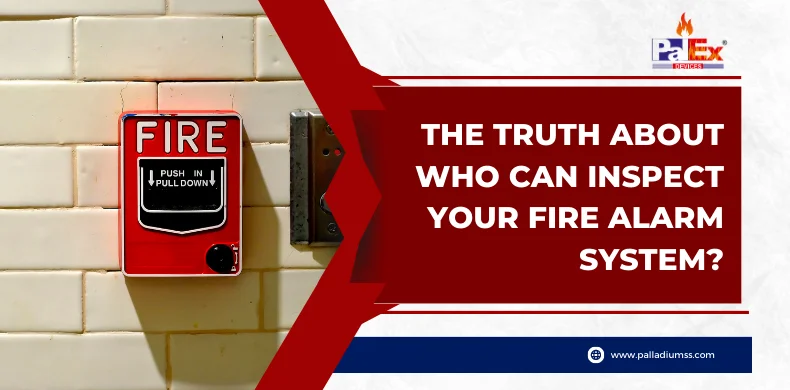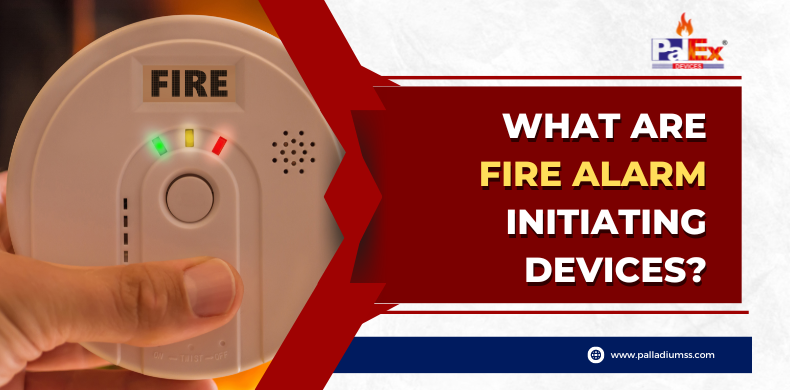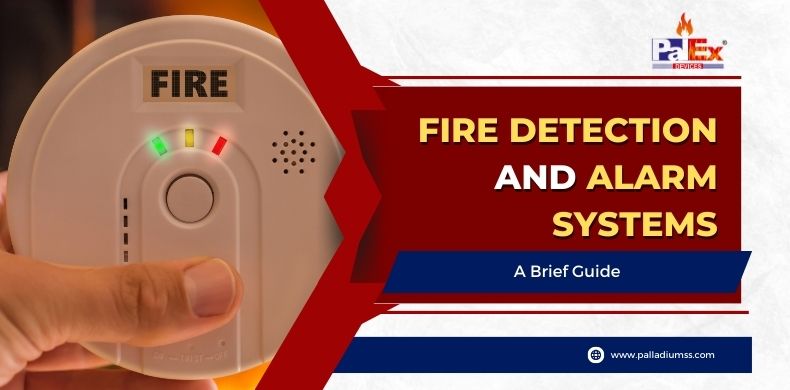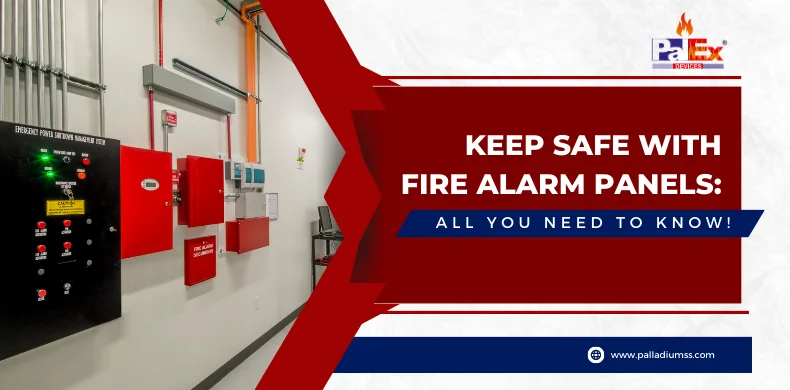Fire alarm panels are essential components of any fire safety system, and understanding what they are, the types available, and when they should be updated is key to maintaining a safe and secure property. This article will discuss a fire alarm panel, the types of fire alarm panels, how long they last, and the general problems associated with old fire alarm panels. Finally, we’ll look at the advantages of updating your fire alarm panel regarding
safety, longevity and cost.
What is a Fire Alarm Panel?
A fire alarm panel is the central control panel of a fire alarm system, responsible for detecting and messaging a fire alarm and connected to several manually operated and automatic fire sensors embedded in the property. The manufacturer’s manual shows the list of devices connected to the fire alarm panel. However, it can generally relate to various detection devices and other systems, such as building management or access control. They can also be connected to an existing fire hydrant system to allow for automatic shut-off of the hydrant should a fire be detected.
The Types of Fire Alarm Panels
There are three main types of fire alarm panels available: conventional / non-addressable
fire alarm panels, wireless fire alarm system panels, and analogue addressable fire alarm panels.
- Conventional / Non-addressable Fire Alarm Panels
These panels are ideal for smaller establishments such as single-story offices, homes, and stores that do not require complex control systems. They are relatively inexpensive to install and are self-sufficient in terms of programming, as they do not require complex communication protocols. The conventional systems generally use zone wiring and zone indicator light systems to indicate which zone within the building has set off the alarm.
- Wireless Fire Alarm System Panels
Wireless fire alarm systems are becoming increasingly popular as they offer an easier, more economical way to install fire detection systems in more significant buildings. These systems feature the same components as their wired counterparts but allow the user to programme the system wirelessly, eliminating the need for expensive cabling installation and the associated costs. The wireless system also makes maintenance and testing easier as wireless sensors can be located to cover otherwise challenging-to-reach areas such as attics and basements.
- Analogue Addressable Fire Alarm Panels
Analogue addressable
fire alarm panels are typically used in large buildings such as shopping centres or office blocks since they provide a complex control system that can be easily integrated with other systems. These systems often feature repeater panels and multiple detectors in each zone with addressable discs on the back of each circuit. Each sensor is programmed with a unique address, allowing the user to identify each one.
Fire Alarm Panels Don’t Last Forever
While fire alarm panels are designed to operate for several years, they still need to become obsolete over time as technology advances and regulations change. Most fire alarm panels have a life expectancy of around 10-15 years, and older systems may become less reliable due to worn-out components. It is also essential to remember that manufacturers often make changes to the fire alarm systems in terms of features, battery type and operating conditions as new regulations are introduced.
Problems with Old Panels
There are various problems related to launching a system that is not up to date. A few of these problems include:
Equipment that has reached the end of its life may not be able to detect new fires beyond its age. End-of-life products can often be difficult to source and much more expensive than a new system.
Safety Features Change
Industry standards and regulations surrounding fire safety are constantly changing, and older systems may need the safety features that a new system would. This means that a more senior panel may need to be able to provide the same level of protection as a more up-to-date system.
<
Fire Regulations May Increase
Regulations often change to reflect the realities of safety and thus influence the necessary fire safety upgrades. This could include installing additional detection devices or the need for broader coverage for more significant buildings.
Installing a new system can be expensive, as equipment and installation costs can be much higher than that of an older system.
- Compatibility Advancements May Be Less Than Satisfactory
Technology does not stand still, and many of the systems we use today need to be updated compared to the available advancements. This means plans may need to be compatible with the obsolete hardware that comes with the older designs.
- BFirmware Upgrades May Be Needed
Firmware upgrades may be needed to improve safety and keep up with changing regulations, and they can be expensive.
- Old System Might Not Be Adequate for Renovated Space
If you’ve recently updated or renovated part of your facility, the old system might need to adequately detect a fire that breaks out in the renovated area.
- System is Too Sensitive or Not Working When it Should
Also read :Kitchen Hood Fire Suppression System Inspection
The sensors in an old system can become too sensitive or fail to detect a real fire. This can be caused by worn-out components or out-of-date programming.
Update Your Fire Alarm Panel Today
Upgrading your fire alarm panel is essential for safety, longevity and cost. A new, up-to-date fire alarm system can detect more recent threats, respond quickly when needed and is generally more economical than attempting to repair an outdated system. Furthermore, a modern fire alarm system can also help to keep your building compliant with updated safety regulations and provide peace of mind that your building is protected.

Fire safety should be the first thing on your mind while starting a new business or building a new house. It should be outlined with a well-laid fire code as it will help in keeping you, your business, family, and employees safe. So, it is always in your best interest to keep the fire alarm system maintained and in good working condition.
Well-trained and licensed technicians should always perform inspections and testing. NICET technicians are the ones we can rely on as the latest technology highly trains them. External factors like dust and dirt hinder the proper functioning of smoke detectors. You will have to compromise your fire equipment due to poor maintenance. However, ensuring adequate and timely care will save you from unplanned emergency repairs and false alarms.
What Does Annual Alarm Fire Inspection Include?
- The central station should receive fire signals.
- All batteries must be tested.
- All building devices should be tested.
- Reset the pull station by pulling down the release to trigger the alarm.
- Activate the unit by blowing smoke into the smoke detector and then follow it by blowing air to clean debris.
- Place a magnetic device near the sensors to trigger the alarm.
- Test the strobes and horns for their flashes and sounds.
- Record retard time.
- Exercise control valves.
Many people overlook the visual inspections of a fire detection system and focus only on its functioning and testing, failing to realize that visually testing is equally important. This is necessary to verify that everything remains unchanged for better performance. Environmental conditions should also be appropriately monitored, like increasing cooling systems to support the load of great heat. Visual inspection should also include physical damage, cleanliness, and device orientation.
The device installed should be tested periodically to maintain the system’s validity. Each system component should be adequately investigated by analyzing its working space, so there’s no trouble during an emergency. All the emergency control functions should be included in a testing program. Maintenance is essential to keep the fire system properly working. If found, any defect or deficiency should be reported to the fire personnel immediately during a routine inspection. Repairs should be as feasible as possible. If there is any delay in mending repairs, then a temporary alternative should be implemented.
Another preventive measure involves regular testing of smoke detectors. It should be based on the environment they are located. NFPA codes should be followed properly and timely.
Now, let’s talk about the batteries. The batteries of the fire alarm system must be visually inspected at regular intervals to ensure that they are damage free. Dry cell or lead-acid batteries should be inspected monthly. Lead-acid batteries should be inspected semiannually. Along with this, electrolyte fluid levels should also be checked regularly. Thirty-minute discharge tests should be conducted on lead-acid-type batteries.
Battery-operated smoke detectors should pass the certification requirements. The smoke alarms must be tested and maintained as per the manufacturer’s instructions. They should be tested and cleaned monthly. Batteries should also be replaced annually or semiannually. The sensitivity of the smoke alarms must also be tested.
Also read :Do Not Keep Your Fire Escape Plans a Secret
Conclusion
Palex smoke detector multiplex Palex smoke detector should be installed and checked regularly. At least two people on your premises should be aware of the schedule and method of inspection as per the fire code.





